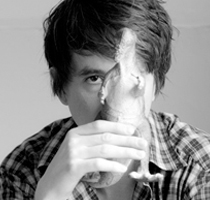Poetry Review
Patternicity
by Jim Johnstone
Gibson, BC: Nightwood Editions, 2010
80 pp., $17.95
A quick glance at the last page of Jim Johnstone’s Patternicity reveals the author to be one of the most widely-published and awarded of Canada’s younger poets, having scored the E.J. Pratt Medal and Prize twice, the 2008 CBC Literary Award for Poetry, the Arc Poetry Magazine’s2009 Readers’ Choice Award, and this year’s Matrix LitPop Poetry Award. His poems—from his first collection, The Velocity of Escape (Guernica Editions 2008), from Patternicity, and from his third book, Sunday, the locusts (Tightrope Books 2011)—have been published in almost every major literary journal across Canada. He’s been funded by both Ontario and Toronto Arts Councils, cranked out the hotly-anticipated Misunderstandings Magazine from 2005 to 2011, and kept up production of the small chapbook outfit Cactus Press. All this to say that he’s somewhat of a success story—a model, so to speak, of making a public mark in Canadian poetry by the relatively young age of thirty-three. However, what’s most impressive about all this is the outward separation between his professional and writing lives: Johnstone is a doctoral candidate at the University of Toronto, having obtained an M.Sc. In Reproductive Physiology from the same school.
Speaking from my rather unscientific sensibility, this seems like strange divorce of the brain—I’ve always admired (and secretly resented) those people who are able to excel at diverse intellectual disciplines. And poetry and physics—at least at first blush—seem as divided as two fields can get. Yet this reaction is regrettably contemporary, a product of our massively splintered culture of hyper-specialized zones of knowledge and expertise: a culture that admits no ‘renaissance’-like mastery of multiple fields. Of course, science and literature were not always divided by such a seeming gulf; poets have attempted to explain the fundamental composition of the universe to their readers for centuries (think Dante, Milton, Pope, Dickinson, and so forth). They weren’t always the most rigorous adherents to the scientific method, but their explorations of the physical and metaphysical universe have had an unimaginable impact on our material and spiritual understandings, and their words have given a fitting and lasting metaphorical character to a universe of boundless, savage beauty.
As a postmodern poet and scientist, Johnstone is not expected to explain or even celebrate how the spheres revolve or life begins. But having a background in physiology allows Johnstone to infuse his work with an exacting terminology: a shake-up of numeric equations, Latin taxonomy, and allusions to physicians, biologists, and laws of planetary motion. It’s given him an eye for detail and a respect for the micro in the macro swarm. And it’s electrified his diction; the language of Patternicity is hyper-nuanced, verbose, and dense, sending me (somewhat red-faced) to dictionaries and encyclopedias in order to keep up. In the logical and mathematical spirit of not mincing words, Johnstone often drops his definite and indefinite articles, loses verbs like “is†and other helpers (e.g., “Each arm/ … a hemisphereâ€, or “Fate a nine-armed frenzy,†or “Sound tears, a kickstandâ€), and casts off conjunctions (e.g., “His eye limps, shamblesâ€, or “Minnows flash …/ pool in tidesâ€). He’s fond of piling on the possessives to cast off filler (e.g., “a lonely vandal’s undoing/ a saxophonist’s clutchâ€). It’s a fairly consistent voice from start to close, though it wisely assumes a diverse range of structural forms—couplets, tercets, quatrains, prose poems, short and long lines, and so forth—throughout. Johnstone’s style, at least from a linguistic point of view, shares many traits with other Canadian lyricists, such as Margaret Avison and Ken Babstock. And for a great deal of readers, these elements (the twisting style, the scientific understanding) will no doubt be a welcome relief from the typical metaphorical and symbolic terrain of the lyric poem, shaped by centuries of longing and repetition.
In a review published in Quill & Quire, Mark Callaghan’s short snippet of criticism for Patternicity was that Johnstone’s “surreal scientific perspective [can seem] self-involved.†One might argue that to some degree all good poetry must be somewhat self-involved—we cannot be entirely inclusive or public poets, and some level of reader-bafflement is expected of any contemporary collection. However, I can sympathize with Callaghan’s point of view. First, you take a dense lyric voice that leaves much for its readers to decipher. Secondly, you spike the transcript with a host of scientific definitions and equations that literally push the layperson toward the dictionary (or web). What you wind up with is a double-shot of textual resistance, a double-layering of obfuscation. Now, I was almost uniformly dazzled by Johnstone’s musical ear and ability to see a new and exciting fusion of images. But I was often slightly aggravated with Patternicity, hoping Johnstone would delve toward more affecting emotional material or simply loosen up his lexical austerity to reach a more accessible voice. My grappling with some of the collection’s scientific conceits, though, helped to rattle me from this sense of disappointment and move me toward a deeper, albeit more theoretical, appreciation.





No Comments so far ↓
There are no comments yet...Kick things off by filling out the form below.